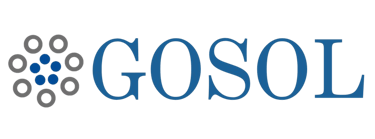The Data Moat: Your Most Defensible Asset in the AI Age
In an era where algorithms are becoming commoditized, your unique, proprietary data is the ultimate source of sustainable competitive advantage. Learn how to build and defend your data moat.
Chirag Gujarati
7/20/20252 min read

For centuries, businesses have built "moats" to protect their market share—brand recognition, supply chain efficiencies, intellectual property. In the 21st century, a new, more formidable moat has emerged: the data moat. As AI models and algorithms become increasingly accessible and commoditized, the unique, proprietary data that you feed into those models becomes your single most defensible long-term asset. An organization that fails to strategically build, enrich, and defend its data moat is building its future on rented land.
A data moat is not simply about having a large volume of data; it's about possessing a dataset that is difficult or impossible for competitors to replicate. This data, when leveraged by AI, creates a virtuous cycle: better data leads to better products, which attract more users, who in turn generate more data. This feedback loop is the engine of modern competitive advantage.
Identifying Your Unique Data Sources
Every business, regardless of size or industry, generates unique data through its operations. The first step in building a data moat is to identify and consolidate these proprietary sources. This often includes:
Customer Interaction Data: Beyond simple transaction histories, this includes support tickets, website clickstreams, product usage patterns, and customer feedback. This data is invaluable for understanding user behavior and personalizing experiences.
Operational Data: Data from your supply chain, manufacturing processes, or service delivery workflows can be used to optimize efficiency and create predictive models that competitors cannot match.
Proprietary Content: For media or information companies, your unique library of content is a powerful dataset for training specialized language models.
The key is to find data that is a byproduct of your core business operations and captures unique insights about your specific market niche. This is far more valuable than any generic, third-party dataset you can buy.
From Raw Data to Strategic Asset: The Enrichment Process
Collecting data is only the first step. To transform it into a strategic asset, it must be cleaned, structured, and enriched. This is often the most challenging but most critical part of the process.
Invest in Data Infrastructure: A modern, scalable data infrastructure (like a data lakehouse) is non-negotiable. It provides a single source of truth and the tools needed to process and analyze data at scale.
Establish Robust Governance: Data quality is paramount. A strong governance framework ensures data is accurate, consistent, and secure. This includes clear policies for data entry, privacy, and access control.
Enrich with External Signals: While your proprietary data is the core, you can often enrich it by joining it with external data sources (e.g., market trends, demographic data) to create even more powerful predictive signals.
"Data is the new oil, but like oil, it's useless until it's refined. The value is not in the collection, but in the refinement."
Defending Your Moat
Once built, your data moat must be actively defended. This involves robust cybersecurity measures to prevent breaches, strict data privacy controls to maintain customer trust, and a legal framework to protect your data as a trade secret. It also means continuing to innovate your products and services in ways that generate new, unique data, constantly deepening and widening your moat.
For the C-suite, elevating the data strategy from a technical concern to a core business imperative is the defining leadership challenge of our time. The companies that win the next decade will be those that understand that their greatest asset is not what they sell, but what they know. And what they know is locked inside their data.
Contact
Level 35, Tower One, 100 Barangaroo Avenue, Sydney, 2000, NSW, Australia
(+61) 02 8114 4565
GOSOL acknowledges the Traditional Custodians of the lands, waters, and communities across Australia. We pay our sincere respects to Aboriginal and Torres Strait Islander Peoples for their enduring cultural heritage, deep spiritual connection to Country, and ancient traditions that continue to guide and inspire. We honour the Elders past and present and recognise their ongoing contribution to the life, culture, and spirit of this land
© 2025 GOSOL. All rights reserved. ABN 65 644 150 943.


